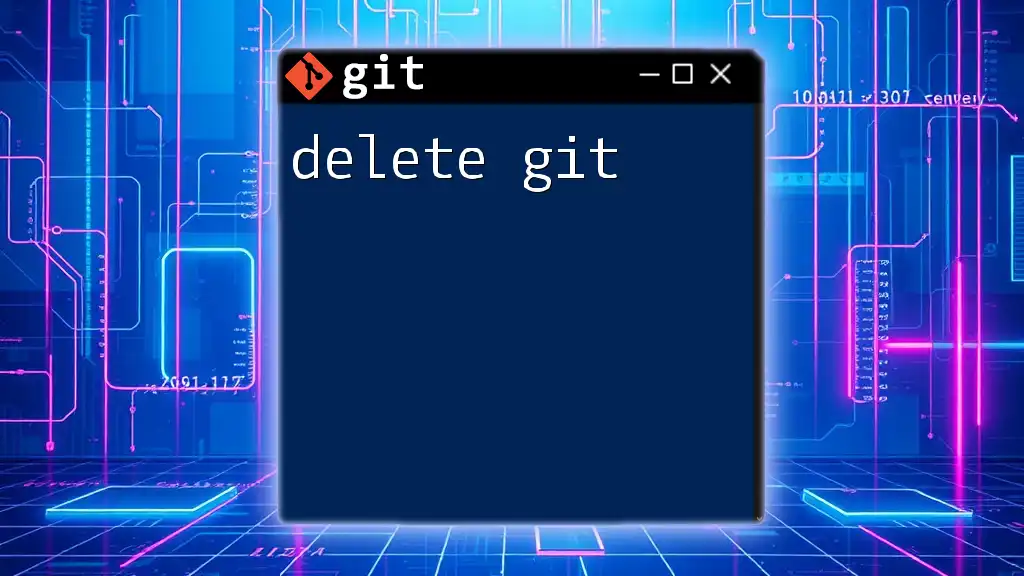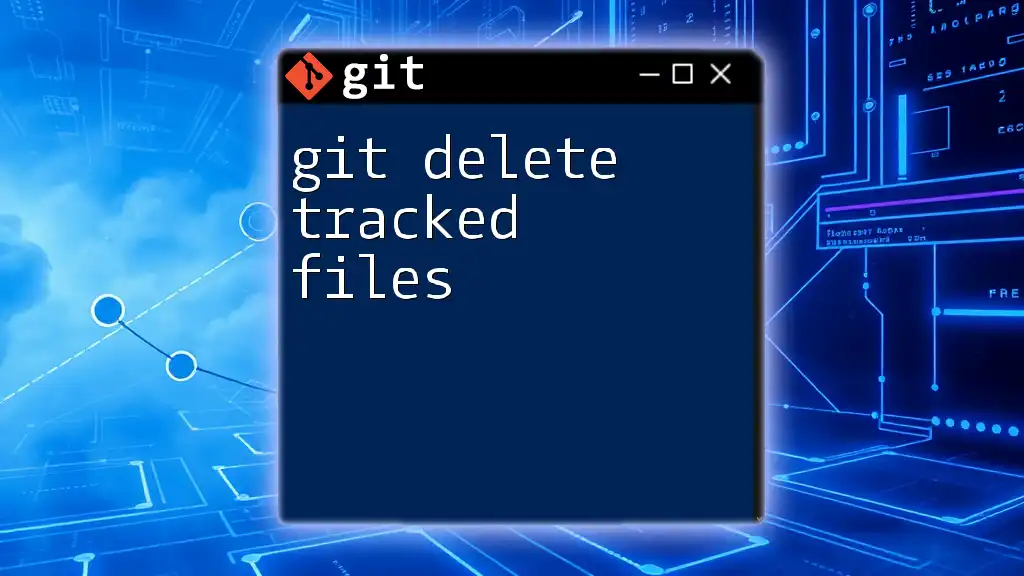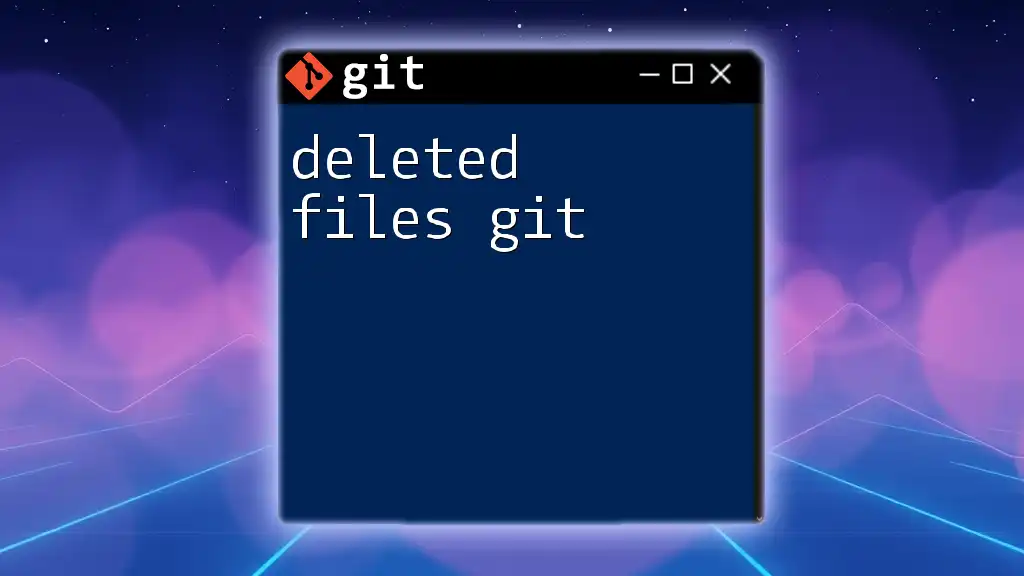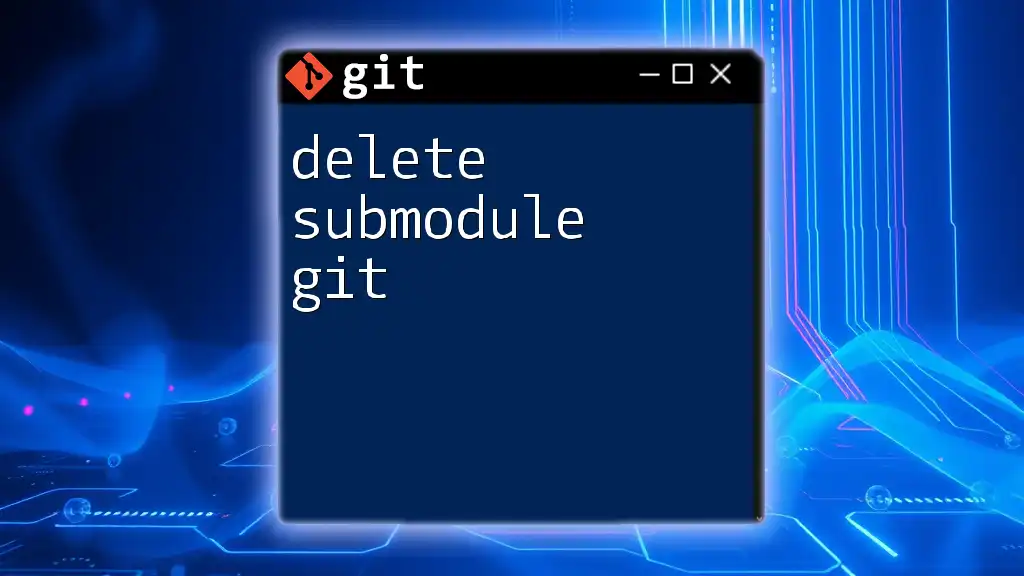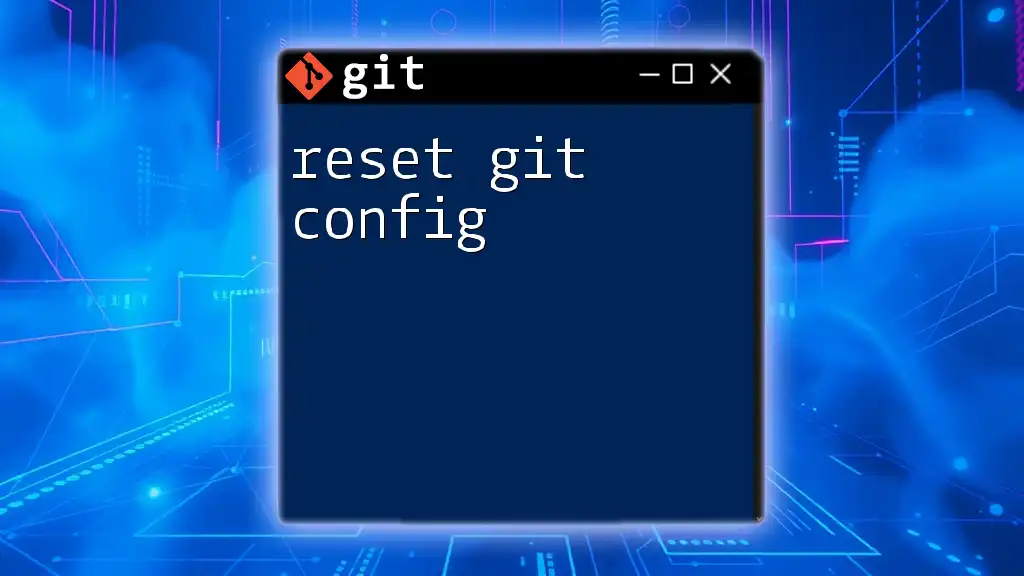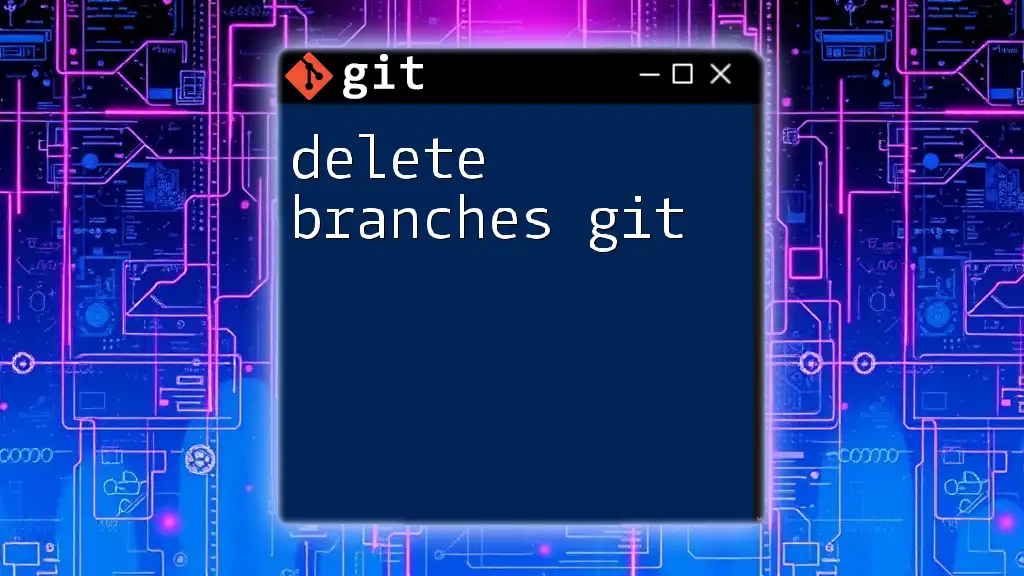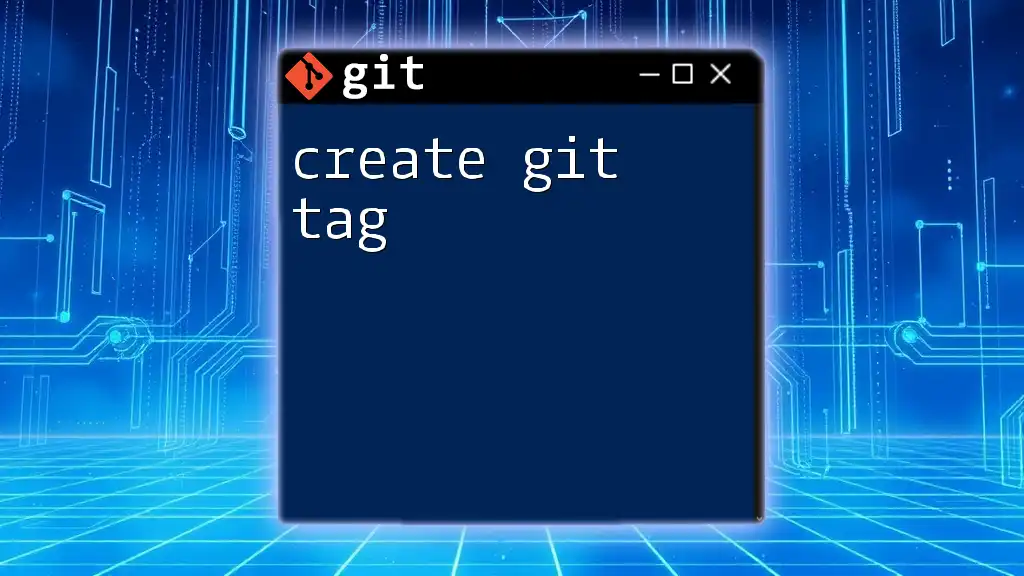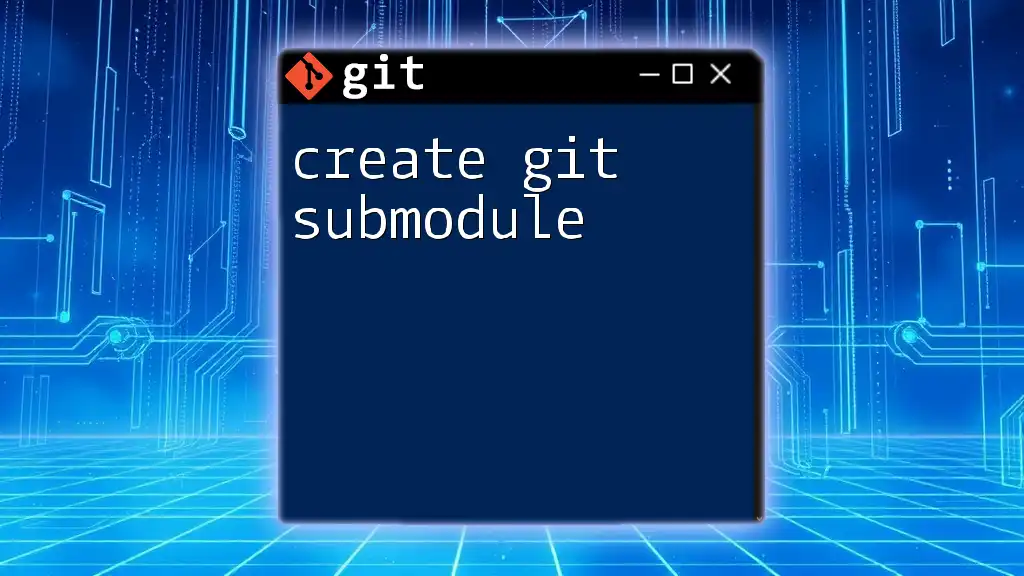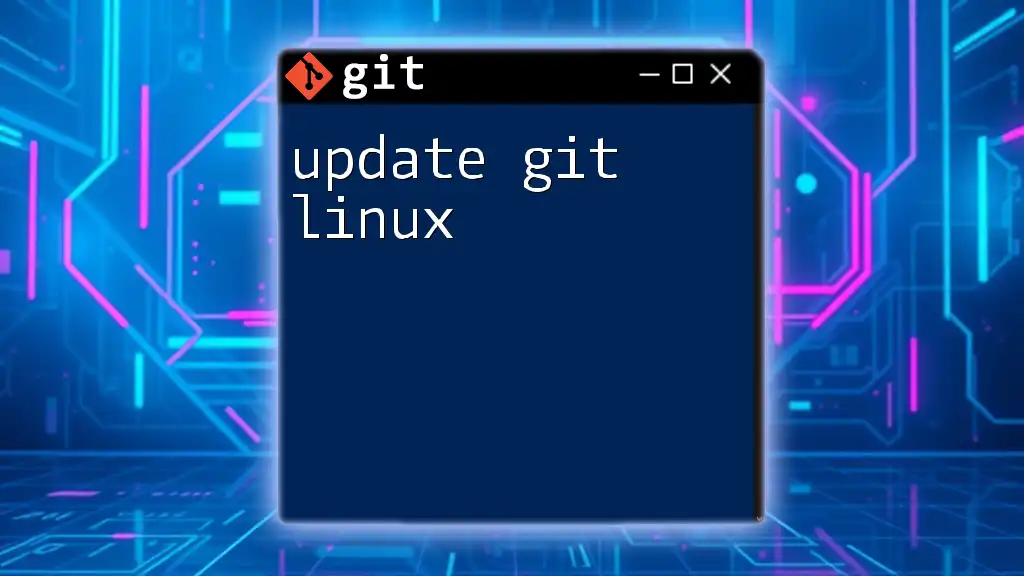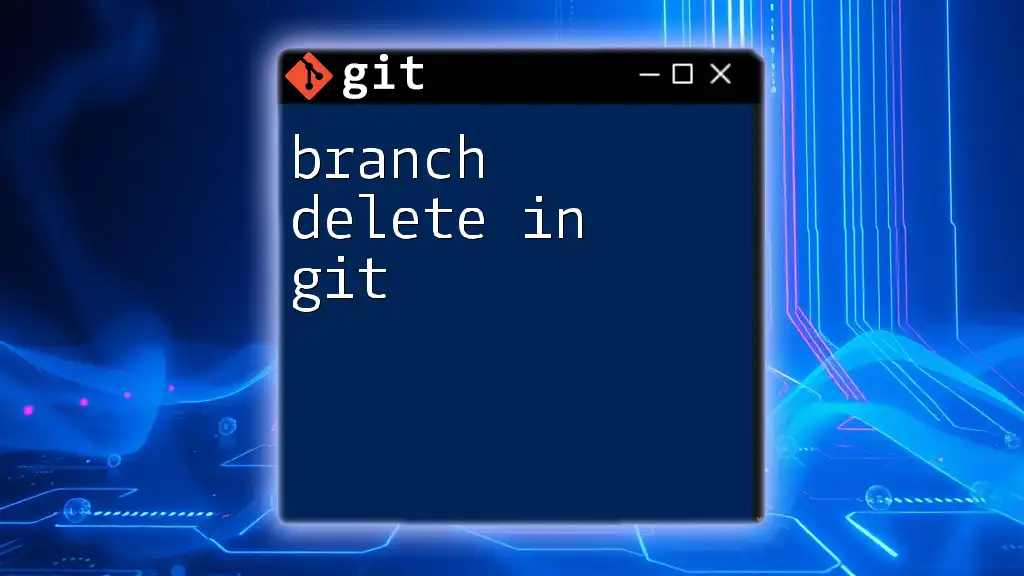To delete files or a directory from a Git repository, you can use the `git rm` command followed by the file or directory name.
git rm filename.txt
Understanding Git Deletion Concepts
What Does Deleting in Git Mean?
Deleting in Git refers to the process of removing files, branches, or commits from your repository. Understanding what "delete git" entails is crucial because different contexts require different approaches. Each element in a Git repository serves a purpose, and knowing how to manage deletions effectively can prevent issues down the line.
Importance of Deletion
Being able to delete items in Git is important for maintaining a clean and organized repository. Clutter can lead to confusion, making it hard for team members to understand the project's current status. On the contrary, improper deletion can lead to loss of important data, compromised project integrity, and even permanent loss of historical version data.
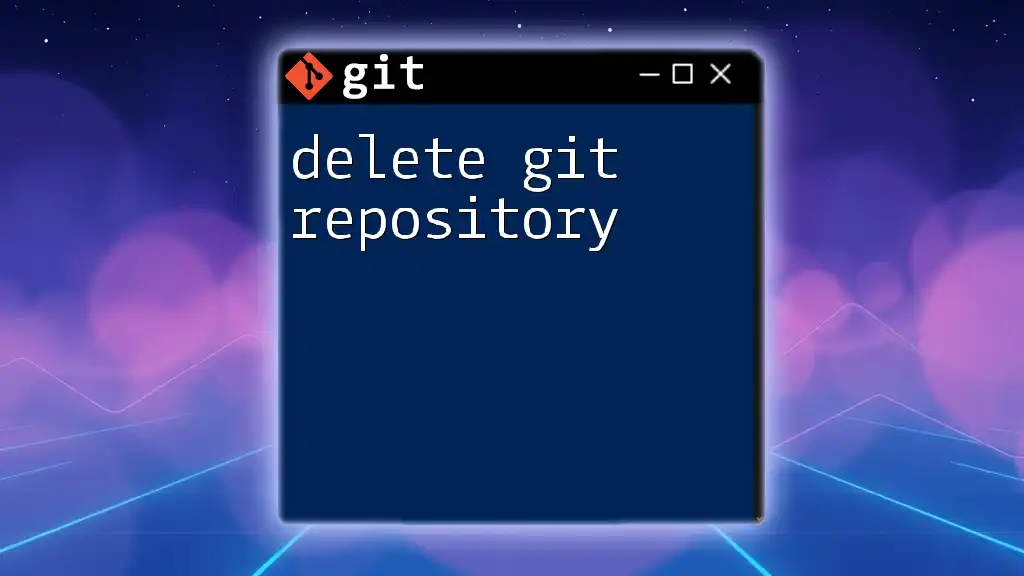
Deleting Files in Git
Staging Area vs. Working Directory
Before performing any deletion, it’s essential to understand the difference between the working directory (where your project files live) and the staging area (where changes are prepared for the next commit). Deleting a file from one does not automatically remove it from the other, so comprehension of this distinction is key.
Using Git Commands to Delete Files
Removing a Tracked File
To remove a file that Git is currently tracking, use the command:
git rm <file>
This command not only deletes the file from your working directory but also stages the change for commit. For example:
git rm example.txt
After executing this command, `example.txt` will no longer exist in your repository, and the deletion is staged for the next commit. It’s a straightforward way to maintain version control while deleting files.
Removing an Untracked File
In the case of untracked files (those not staged for commit), you will employ a two-step process. First, delete the file using the standard remove command, and then stage the changes. Here’s how to do it:
rm <file>
git add .
For instance:
rm example.txt
git add .
This approach will delete the file from your filesystem and update the staging area to reflect that change. Understanding these actions keeps your project tidy and organized.
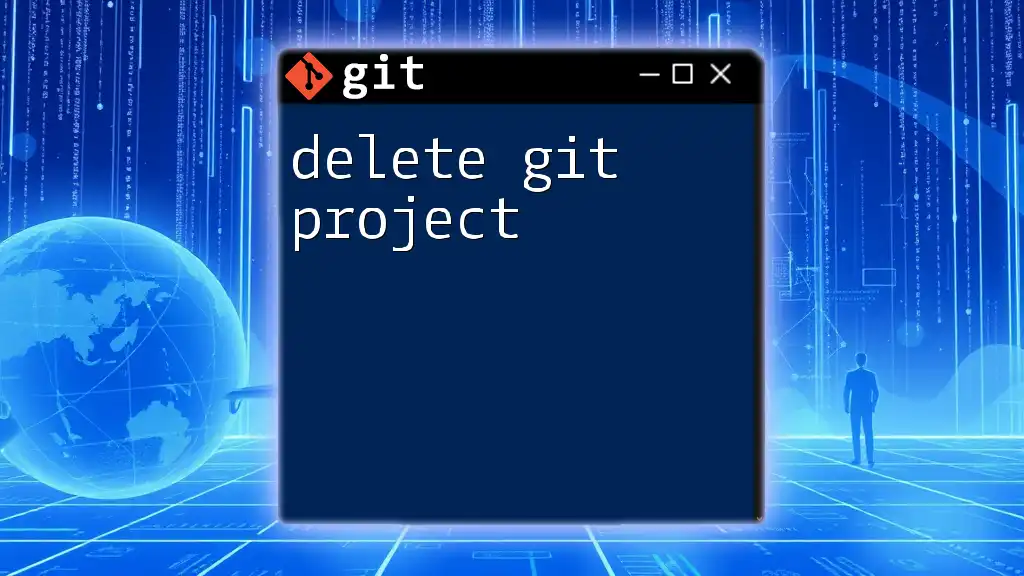
Deleting Branches in Git
Local Branch Deletion
When to Delete a Local Branch
Branch management is critical, especially after merging features or working on temporary branches for experimental projects. Once a branch has fulfilled its purpose, it's wise to delete it to reduce clutter.
Command to Delete a Local Branch
Use the command:
git branch -d <branch-name>
This command safely deletes a local branch as long as it has been fully merged. If you need to force delete an unmerged branch, use:
git branch -D <branch-name>
For example:
git branch -d feature-branch
By following these practices, you ensure that your local branches are organized and only relevant branches are kept in the project.
Remote Branch Deletion
Reasons for Deleting Remote Branches
Remote branches often need to be removed when features are merged or when they become outdated. Managing remote branches helps keep your collaborative environment clean, ensuring everyone only sees active branches.
Command to Delete a Remote Branch
To delete a remote branch, the command is:
git push origin --delete <branch-name>
For instance:
git push origin --delete feature-branch
This action will inform everyone working with the repository that the branch is no longer available.
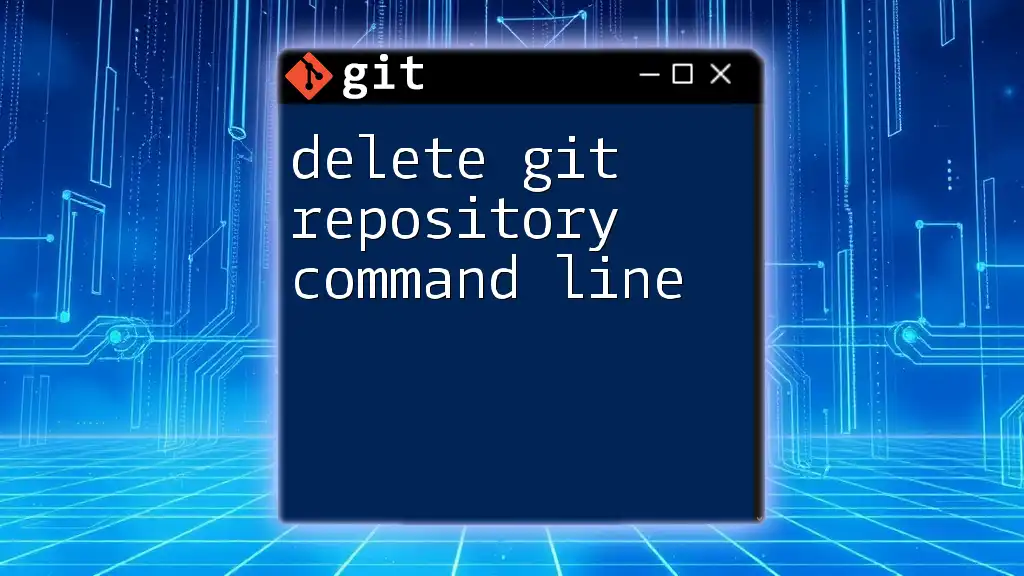
Deleting Commits in Git
Understanding Commit History
Commits are snapshots of your repository at a given time. Understandably, they play a significant role in tracking development. Deleting commits requires careful consideration since you must maintain a coherent history while managing the project.
Reverting a Commit
When to Revert a Commit
Reverting a commit is ideal when you want to undo changes without modifying the project history. This is good practice in collaborative environments where keeping a transparent history is vital.
Command to Revert a Commit
Use the command:
git revert <commit-id>
For example:
git revert 1a2b3c4
This command creates a new commit that undoes the changes made in the specified commit, allowing the previous state of the project to be restored without losing commit history.
Deleting Recent Commits
Using `git reset` Command
The `git reset` command is powerful and can alter your commit history. It has three options that dictate how it operates:
- `--soft`: Moves the HEAD pointer to a previous commit while keeping changes in the staging area.
- `--mixed`: Moves the HEAD pointer and does not keep the changes in the staging area (default if no option is provided).
- `--hard`: This option deletes both the commit and changes from your working directory.
For example, to delete the last commit and all changes:
git reset --hard HEAD~1
Caution with Resetting
Be careful with `git reset`, especially with the `--hard` option, as it permanently deletes work and cannot be recovered easily. Make sure you are absolutely certain when using this command, as it can lead to data loss.
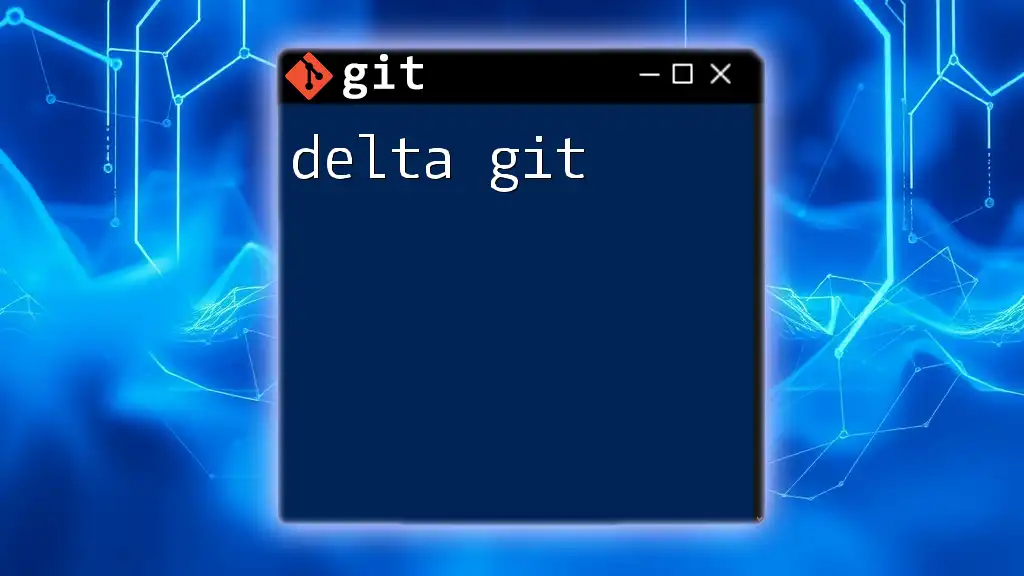
Best Practices for Deleting in Git
Establishing a Deletion Strategy
Create a deletion strategy by determining clear guidelines for what should be deleted. This clarity prevents confusion and ensures all team members are aligned and informed. Documenting these practices can provide a valuable reference point for current and future contributors.
Using Backups and Branch Management
Always keep backups of branches you consider deleting. This practice safeguards against accidental loss of valuable development work. Additionally, regularly merging branches and cleaning up unused ones can significantly enhance repository management.
Collaborating and Deleting
Communication is key in collaborative environments. Before deleting branches or making significant changes to commits, ensure everyone involved is aware of these actions. Maintain transparency to avoid disrupting team workflows and project statuses.
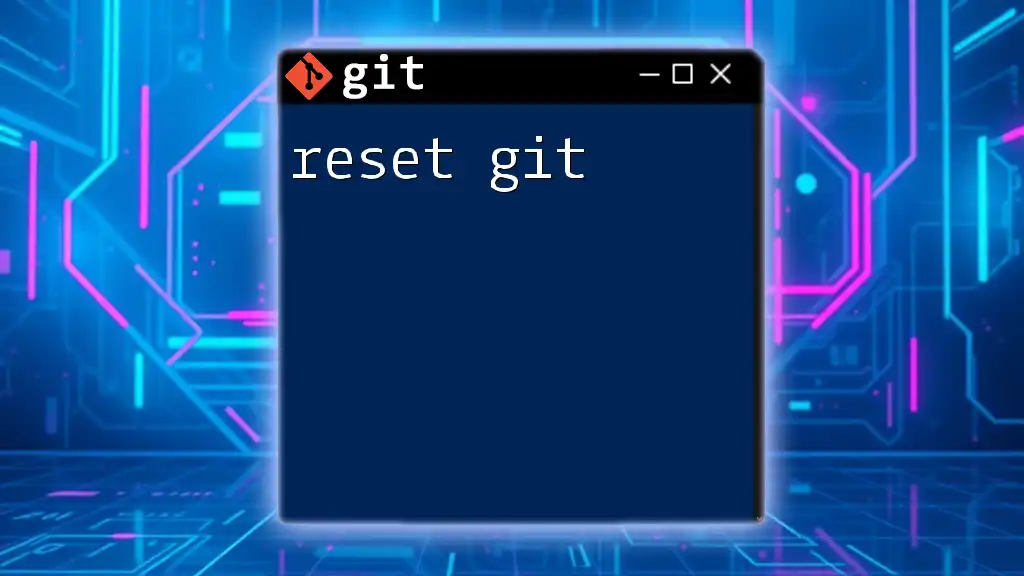
Conclusion
The ability to delete git items selectively and strategically is an essential skill for any developer using Git. The commands and strategies discussed in this guide are designed to help you manage your repositories effectively and maintain a clean and organized project. As you implement these practices, remember that proper deletion not only improves clarity but also enhances collaboration within your team.
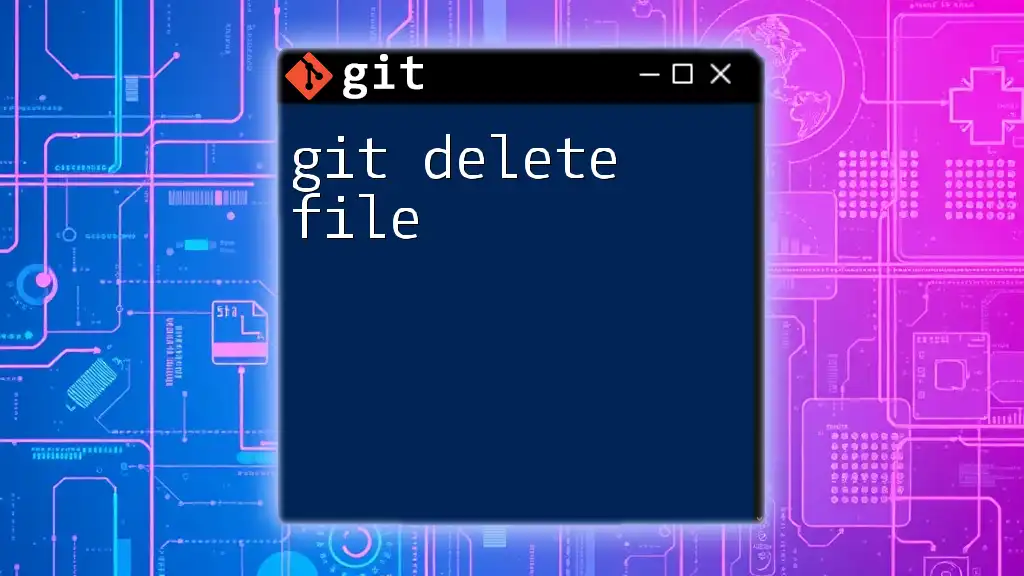
Additional Resources
For further learning, explore the official Git documentation, which provides comprehensive details of Git's functionalities. Consider additional tutorials or courses focused on advanced Git usage to deepen your understanding and skills.
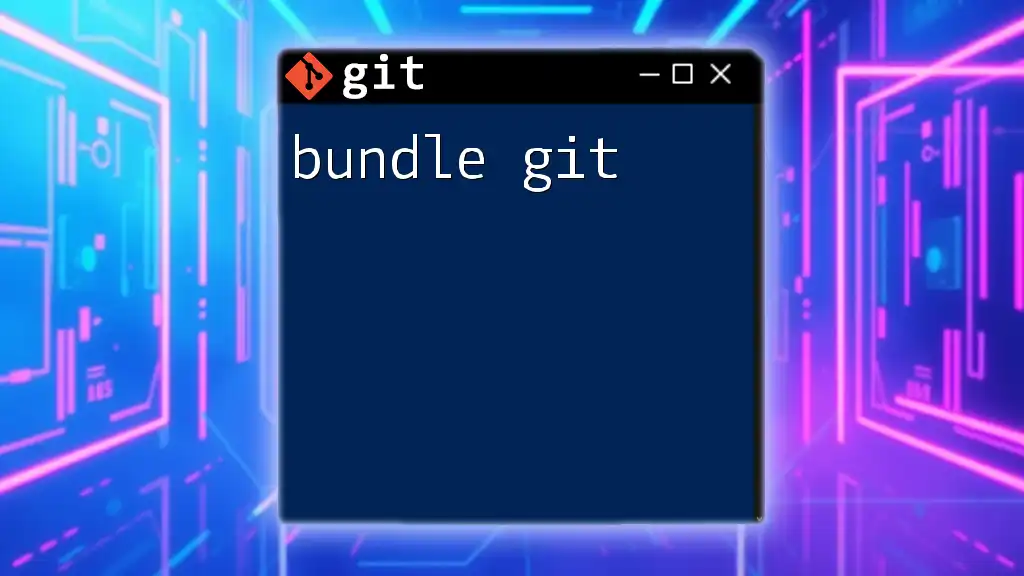
Call to Action
Don't miss out on mastering Git! Sign up for our classes or follow our blog for more insightful tips and tricks on efficient Git command usage.

